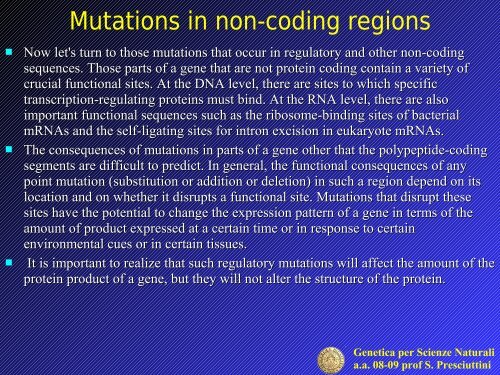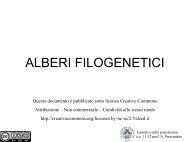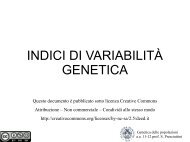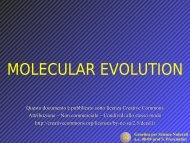Gene mutation
Gene mutation
Gene mutation
You also want an ePaper? Increase the reach of your titles
YUMPU automatically turns print PDFs into web optimized ePapers that Google loves.
Mutations in non-coding regions<br />
Now let's turn to those <strong>mutation</strong>s that occur in regulatory and other non-coding<br />
sequences. Those parts of a gene that are not protein coding contain a variety of<br />
crucial functional sites. At the DNA level, there are sites to which specific<br />
transcription-regulating proteins must bind. At the RNA level, there are also<br />
important functional sequences such as the ribosome-binding sites of bacterial<br />
mRNAs and the self-ligating sites for intron excision in eukaryote mRNAs.<br />
The consequences of <strong>mutation</strong>s in parts of a gene other that the polypeptide-coding<br />
segments are difficult to predict. In general, the functional consequences of any<br />
point <strong>mutation</strong> (substitution or addition or deletion) in such a region depend on its<br />
location and on whether it disrupts a functional site. Mutations that disrupt these<br />
sites have the potential to change the expression pattern of a gene in terms of the<br />
amount of product expressed at a certain time or in response to certain<br />
environmental cues or in certain tissues.<br />
It is important to realize that such regulatory <strong>mutation</strong>s will affect the amount of the<br />
protein product of a gene, but they will not alter the structure of the protein.<br />
<strong>Gene</strong>tica per Scienze Naturali<br />
a.a. 08-09 prof S. Presciuttini








